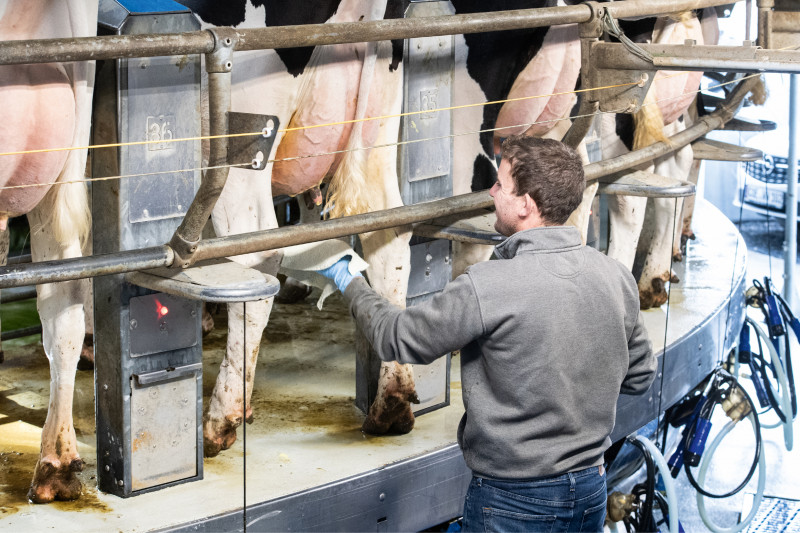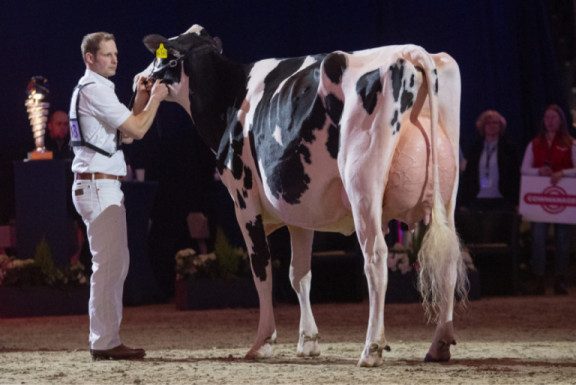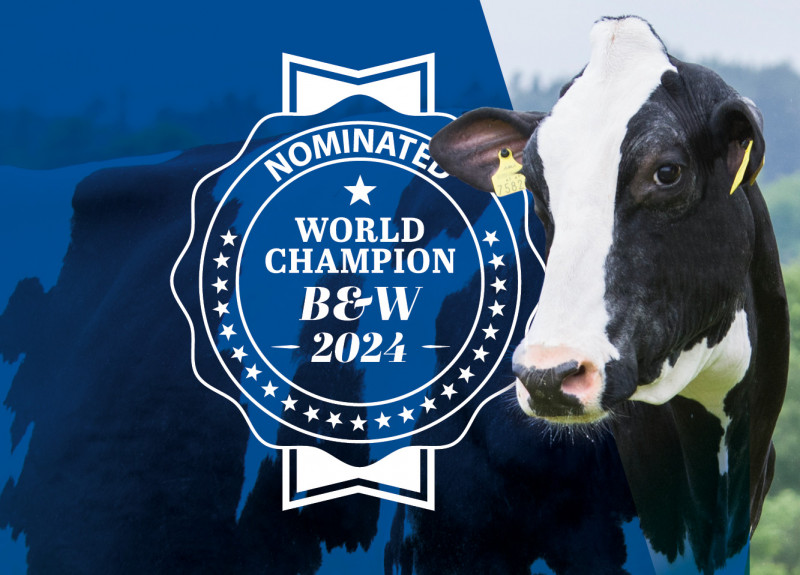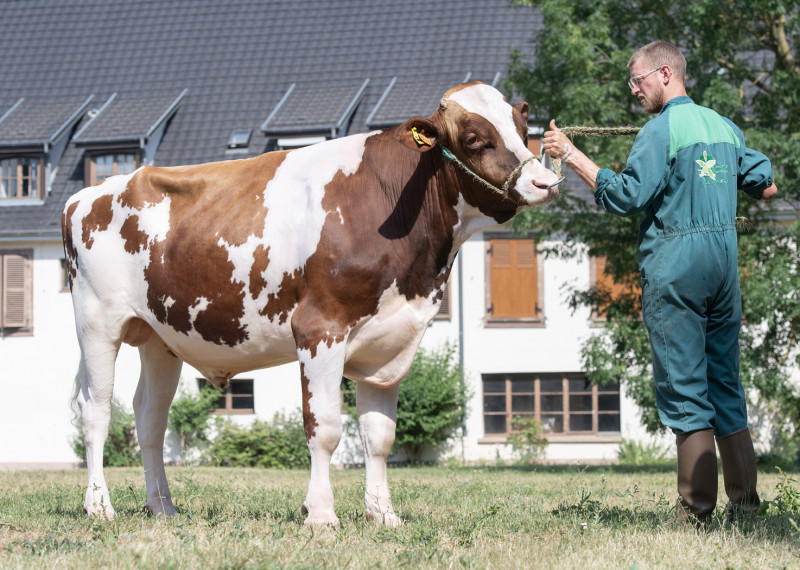
High quality milk from healthy udders of high producing and long living cows is exactly what dairy farmers around the world are striving for. Udder health plays an important role in this, not only in terms of animal health and welfare, but also in terms of profitability. It is a profound topic with a lot of puzzle pieces that fit together to make up the big picture.
JACQUES BERNARD, CHRISTINE MASSFELLER
The economic losses incurred through udder infections are gigantic. Diagnosis and treatment, medication, dumping milk and decreases in production, possible lab and veterinary costs, decrease in animal value and involuntary culling. These are all cost factors that can quickly lead to large financial holes in the operational accounts. According to an analysis of Phibro – Animal Health Corporation, the average cost for a case of mastitis is $326. There are further long-term effects as well, like metabolic and fertility problems that cows fight with due to udder disease. Some animals are genetically more susceptible to high SCS and mastitis and are more sensitive to environmental conditions. Additionally, it is often the case that several animals within a herd are affected, multiplying the costs, which not only has financial repercussions for the farmer, but can also be demoralizing.
STRENGTHENING IMMUNITY
The complexity of udder health arises because of the number of factors that influence it and because there are so many adjustments that need to be just right for good udder health. The inverse also means that only one small problem can often cause major headaches, as it is not always obvious which rung in the ladder is weak. Dr. Arnout Dekker is a trained veterinarian and feed expert at Phibro. In our conversation Dekker explains: ‘It is too bad that mastitis still plays such a big role on farms. But before we can suggest solutions, we need to know a lot about the farms to build an overall profile.’ One solution from Phibro is the product OmniGen AF, which significantly strengthens the immune system so that animals are less susceptible. At a rate of 55g per cow per day in the feed markedly improves the function of the immune system. Particularly for stressful situations, like around calving or during heat stress, the cow’s immune system is challenged, which is why the feeding of OmniGen AF in these periods is recommended, according to Dekker. There are different stressors that come up on farms throughout the year, like over-crowding, hoof trimming or feed changes. That is why most of Dekker’s clients feed the supplement every day. ‘At the end of the day it is a question of return on investment and the investment in the health and immunity of the cow typically pays back,’ Dekker explains. On many of his clients’ farms he was able to observe last summer that the animals were able to deal the effects of bluetongue disease relatively well. ‘It is not a treatment against the disease, but we know that the disease is a big challenge for the immune system, which is why improved function is advantageous,’ reasons Dekker. Before he recommends OmniGen AF, Dekker wants to be sure that it will bring the desired effect. To this end, he analyses the work processes on the farms and evaluates how much importance is given to the topic of hygiene. He also wants to see what the resting areas and milking equipment looks like and investigates whether the udder infections are cow specific or linked to the environment. ‘It is always better when we know what we are fighting against,’ he says with a laugh and concludes: ‘It is often the small things that make a big difference in improving udder health.’
DIAGNOSIS AND CONTROLLING
Milking technology plays as important a role in producing milk as feeding. As such, the company milkrite | InterPuls has made it its mission to improve udder health through innovative milking technology. Likely the most well-known product of milkrite | InterPuls is the triangular-shaped teat-cup liner, which provides an even closing motion and thereby puts less pressure on the teat ends. In addition to this innovation, milkrite | InterPuls also has a large selection of products for milking, like milking clusters, milking claws, pulsators and meters. A new development was the focal point at the UK Dairy Day and at the Space-Show: the new MIPulse. ‘The MIPulse is a diagnostic tool that helps farmers maintain high production and ensures that teat-cup liners, pulsators and vacuum pumps are all operating optimally,’ reports Nathalie Stacey, marketing manager of milkrite | InterPuls. With the permanent monitoring and recording, irregularities are quickly recognized, and the faults are communicated to the farmer so that they can be corrected as quickly as possible. The data can be viewed at any time via smartphone or PC and the system is compatible with all active milking equipment manufacturers worldwide.
‘The investment in udder health and immunity of the cow typically pays back.’
FAST INTERVENTION
In addition to feeding and technology there are other factors that can improve udder health. Ysabel Jacobs of Ferme Jacobs and Tom Cull of Budjon Farms shared their experiences in dealing with udder disease and preventing it. ‘First off, the basics have to be right; the cows have to always be clean and lying in a dry place. We try to train personnel at Budjon so that there are no differences regardless of who’s milking or looking after the animals,’ reports Tom and adds that there is an additional tool which has been helping observe the animals for several years: smaXtec. This is a bolus that precisely collects data about internal body temperature, amount of water consumed and drinking cycles, rumination patterns and estrous activity. ‘When an alarm comes from a cow for body temperature, we take a closer look to determine whether it may be an immune response. This has already helped several times to recognize mastitis six to twelve hours earlier, which allows us to implement our standardized response for udder disease sooner. This increases the odds of recovery and greatly improves animal welfare, and another effect is that it decreases antibiotic use,’ explains Tom.
UDDER QUALITY
Ysabel explains that at Ferme Jacobs two different milking systems are used, with part of the herd in a tie-stall barn and the other part is milked with a robot. ‘For the cows on the robot, we use the herd management software from Lely to monitor the animals. If a cow is noted for SCS or well-being, then we separate her from the rest of the herd to reduce risk of transmission and to better observe and care for the animal.’ At Jacobs, reducing antibiotic use is also high on the priority list, which is why for the prevention and recovery from udder disease they rely on, among other things, the white lotion from Udder Comfort. ‘We use Udder Comfort one to two days after calving if the cows need it. It promotes circulation and makes the udder texture more supple. For our show cows we use the lotion every day because we are convinced that it improves udder quality and health,’ concludes Ysabel.


